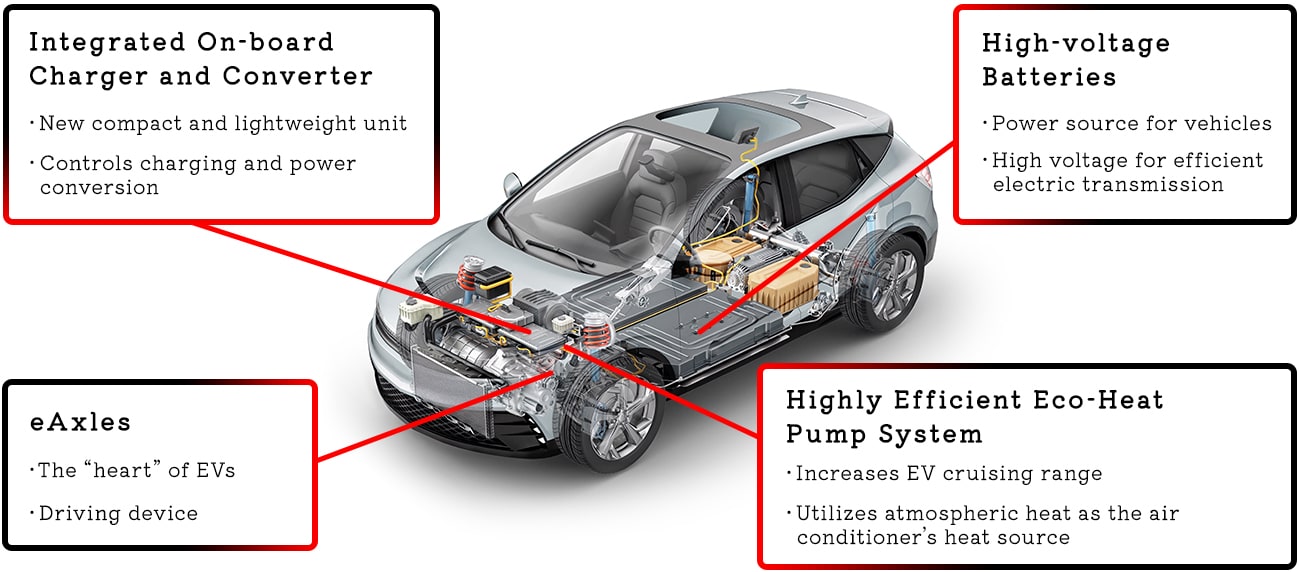What are Non-ferrous Metals?
Application of Non-ferrous Metals
Non-ferrous metals are widely used in a broad spectrum of applications, ranging from everyday items to fields requiring cutting-edge technology.
Non-ferrous metals possess various exceptional properties related to their density, strength, and electric and thermal conductivity, making them essential to various industries. Here, we introduce some examples of their application.
PApplications of Non-ferrous Metal Materials handled by Izawa Metal
Non-ferrous metals are widely used in various industries due to the important role they play in reducing the weight of electric vehicles (EVs), ensuring electrical conductivity, improving resistance to corrosion, and helping promote sustainability.

Below are the four main reasons non-ferrous metals are used in EVs.
Lightweight and strong: Non-ferrous metals contribute to reducing vehicle weight and improving strength.
Electrical conductivity: Non-ferrous metals are essential materials for efficient power transmission
Corrosion resistance: This is important for a product’s durability and reliability
Renewability and sustainability: Non-ferrous metals are recyclable and environmentally-friendly materials
As described here, non-ferrous metal materials are indispensable to modern society and play a major role in our daily lives and the technological advances we make.
What’s more, new non-ferrous metal materials are now being researched due to their environmental friendliness and sustainability, and further innovations are expected in the future.









